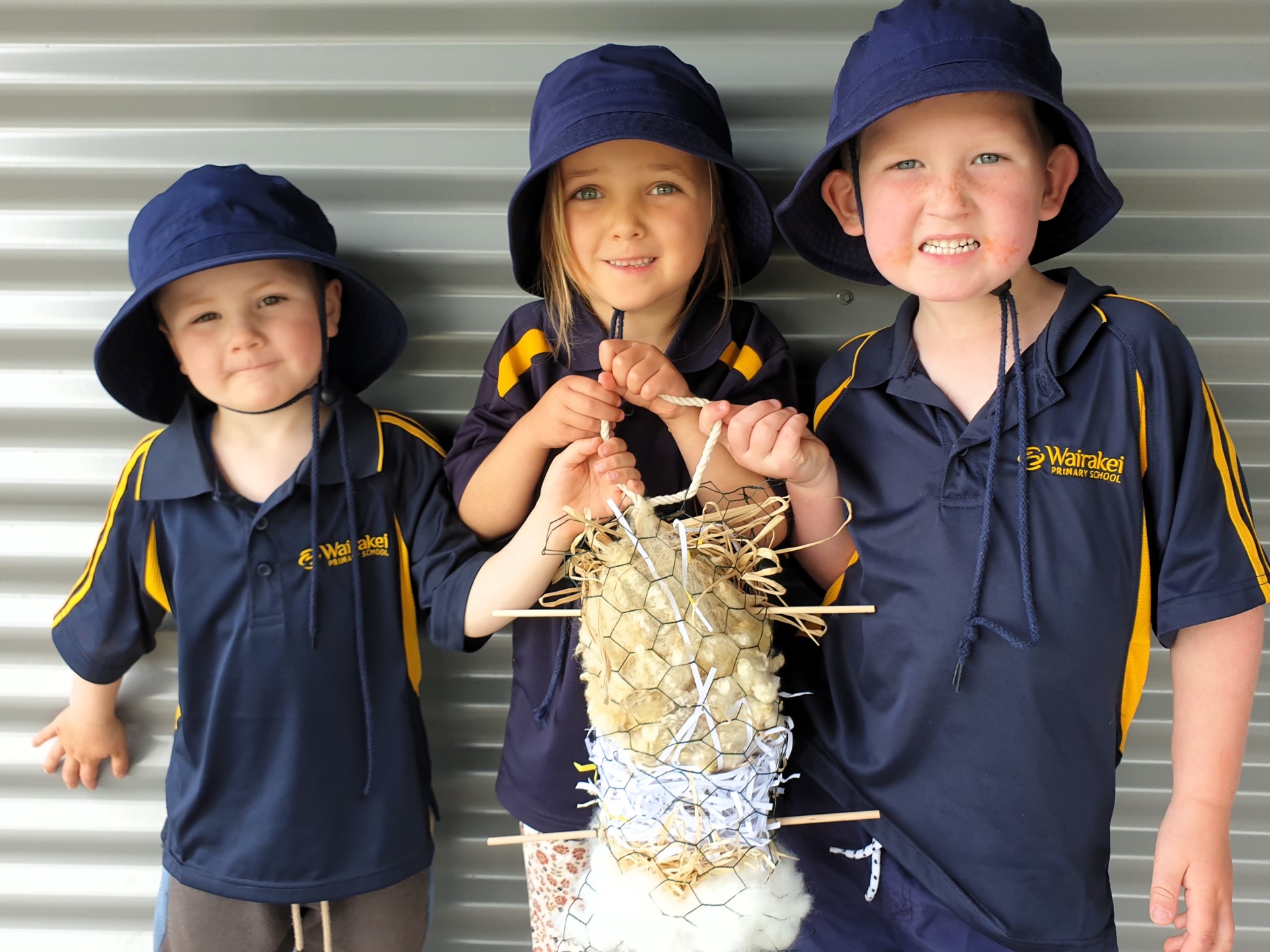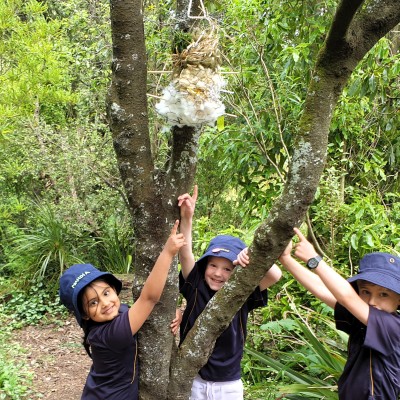Our Responsibility
We Are Guardians - He kaitiaki tātou katoa / Kaitiaki - Call to Action - Karanga ki te mahi
The students in Room 16 understand that as guardians of their school, it is their responsibility to care for and look after their surroundings.
Collecting Data
Room 16 conducted a survey to see how many endemic birds live in the gully and in the trees near our school. First, they walked around the field and looked into the trees.
Mason said, “There’s a bird in the grass.”
Mrs. Griffin said, “That’s a Sparrow.”
Olivia said, “There’s a Pīwakawaka!”
Mrs. Green said, “Yes, there were two Pīwakawaka flying into the gully.”
Chloe said, “I see three nests.”
Next, the students sat quietly in the gully, listening and looking for birds.
Skye said, “Shhhhh. I hear a bird.”
Mrs. Griffin said, “Yes, that’s the song of a Tūī.”
The students were surprised that they only saw two Pīwakawaka and heard one Tūī. They decided to do something about this.
Beau said, “We need to get more birds to live here.”
Researching
To encourage more birds into our school, the students researched these birds and gathered information about their environment, diet and other facts. The students found out that these birds need nests for their eggs.
Chloe said, “Remember the nests I saw in the trees. Maybe we can help them build nests.”
Exploring a Nest
The students looked closely and carefully at a real nest. They noticed it was made from small twigs, leaves, hair and fluffy stuff. They thought about how hard it would be to build a nest, especially with just a beak and two feet.
After lots of discussion, they decided the best way to encourage birds into the school was to help them with their nests. By collecting a range of different materials for birds to use for their nests, students could use a wire basket to hang the nesting materials in. More research led to students learning about the importance of nesting material being natural. Sheep’s wool, straw, dried grass, pet hair, twigs and small leaves were the best materials for nests.
Making the Wire Basket
Bending and twisting the wire into a tube was difficult. Students had to work together to hold the ends while joining them.
Filling the Basket
Students brought in sheep’s wool, straw, dried grass and pet hair. Twigs and small leaves were collected from around the school. Stuffing the baskets was messy and some of the straw and grass kept falling out. Eventually everything stayed in the baskets and the students were able to close the top and fasten a rope to hang them from. To complete the Nesting Distribution Hanger students pushed two sticks through the hanger for birds to stand on.
Nesting Distribution Hanger
The completed hangers were ready to place in the gully.
Placing the Nesting Distribution Hangers
Students looked for and found tall trees to place their Nesting Distribution Hangers from.
Next Step
Students will check their hangers to see if they are being used by the birds. They will keep track of which materials are being removed and replenish them if needed.
Students will conduct another survey to determine if the Nesting Distribution Hangers are encouraging more birds to come to their school.


























Comments
No one has commented on this post yet.